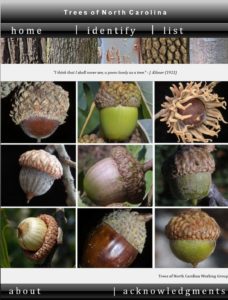Tree Identification Tools
go.ncsu.edu/readext?645110
en Español / em Português
El inglés es el idioma de control de esta página. En la medida en que haya algún conflicto entre la traducción al inglés y la traducción, el inglés prevalece.
Al hacer clic en el enlace de traducción se activa un servicio de traducción gratuito para convertir la página al español. Al igual que con cualquier traducción por Internet, la conversión no es sensible al contexto y puede que no traduzca el texto en su significado original. NC State Extension no garantiza la exactitud del texto traducido. Por favor, tenga en cuenta que algunas aplicaciones y/o servicios pueden no funcionar como se espera cuando se traducen.
Português
Inglês é o idioma de controle desta página. Na medida que haja algum conflito entre o texto original em Inglês e a tradução, o Inglês prevalece.
Ao clicar no link de tradução, um serviço gratuito de tradução será ativado para converter a página para o Português. Como em qualquer tradução pela internet, a conversão não é sensivel ao contexto e pode não ocorrer a tradução para o significado orginal. O serviço de Extensão da Carolina do Norte (NC State Extension) não garante a exatidão do texto traduzido. Por favor, observe que algumas funções ou serviços podem não funcionar como esperado após a tradução.
English
English is the controlling language of this page. To the extent there is any conflict between the English text and the translation, English controls.
Clicking on the translation link activates a free translation service to convert the page to Spanish. As with any Internet translation, the conversion is not context-sensitive and may not translate the text to its original meaning. NC State Extension does not guarantee the accuracy of the translated text. Please note that some applications and/or services may not function as expected when translated.
Collapse ▲ Many gardeners can distinguish among major groups of trees, but identifying genus and species can be challenging. Botanists use morphological features—including leaf shape and arrangement, leaf hairs, presence or absence of thorns, and especially fruit and flower structures—to distinguish among species.
Many gardeners can distinguish among major groups of trees, but identifying genus and species can be challenging. Botanists use morphological features—including leaf shape and arrangement, leaf hairs, presence or absence of thorns, and especially fruit and flower structures—to distinguish among species.
For precise identification, species are sorted by such character traits using a systematic tool called a dichotomous key. Dichotomous keys present two sets of characteristics in a couplet. Users select one of the two choices that more accurately describes the specimen.
Each choice will lead the user to a new couplet. This process is repeated until the final choice leads to a specific plant species. Due to the huge number of potential species, most keys focus on a set of plants in a geographical area. The Flora of North America is 30 volumes—enough for several bookshelves!
However, technology has made using keys easier than ever. The NC State University Herbarium and its partners have developed several online keys helpful to gardeners. Trees of North Carolina is an easy-to-use online key for native trees from across the state. Winter Twig Keys will help you identify trees using the buds, leaf scars, and other features visible in winter, with a focus on common trees in the eastern NC piedmont. These tools can enhance your botanical skills and help you become more familiar with common native species on your property.
—Matt Jones
Additional interesting articles are linked from the index
Extension Gardener Newsletter


